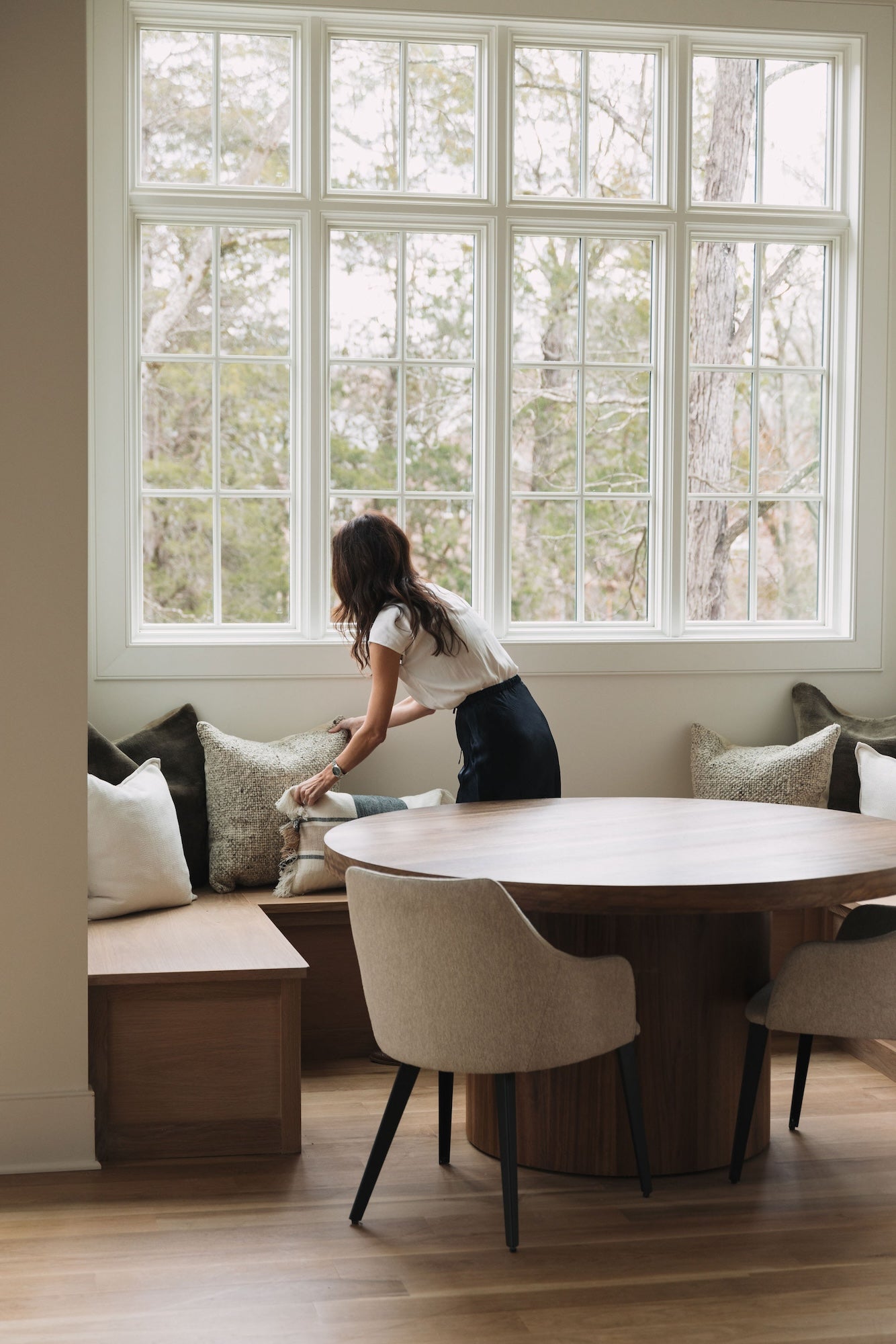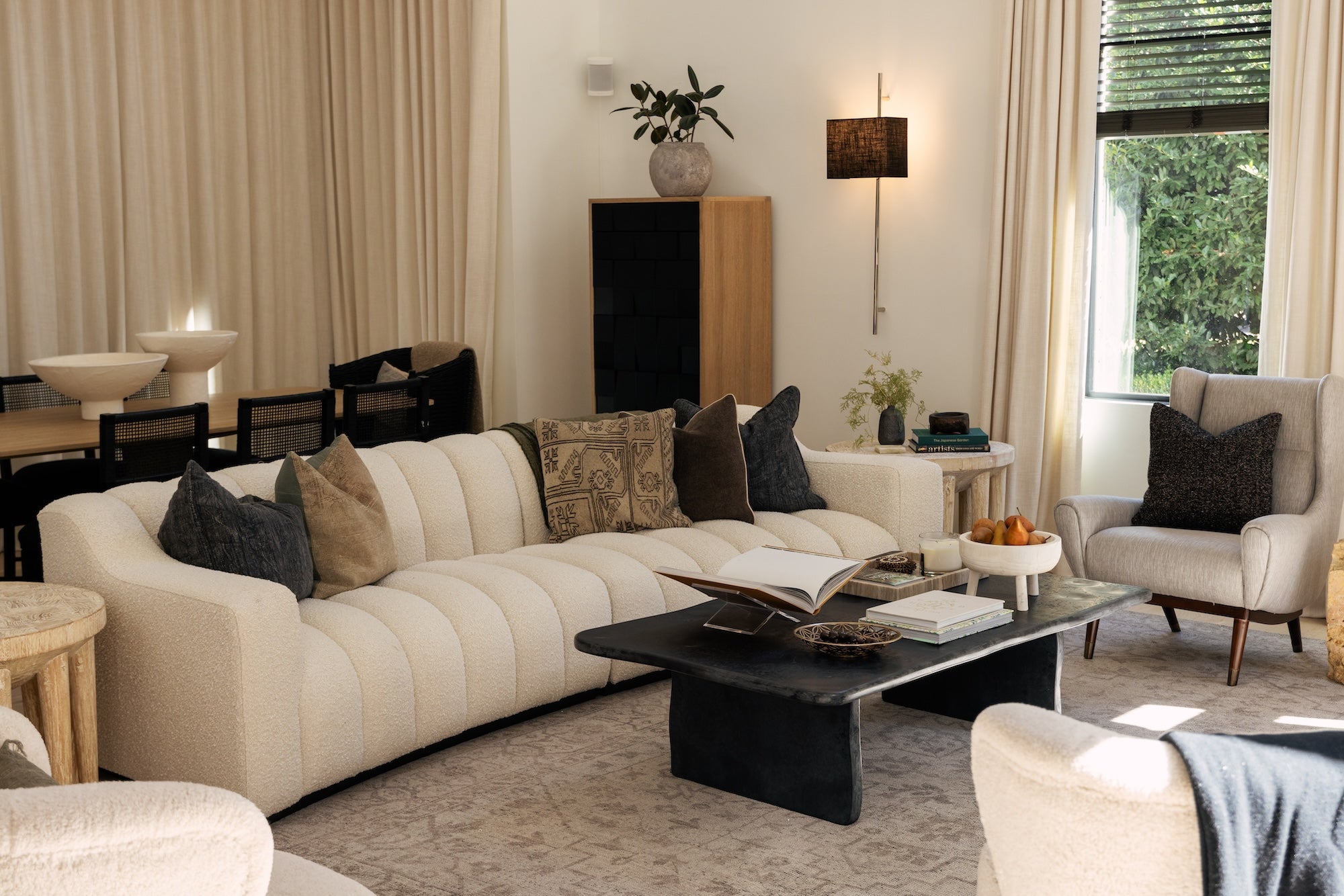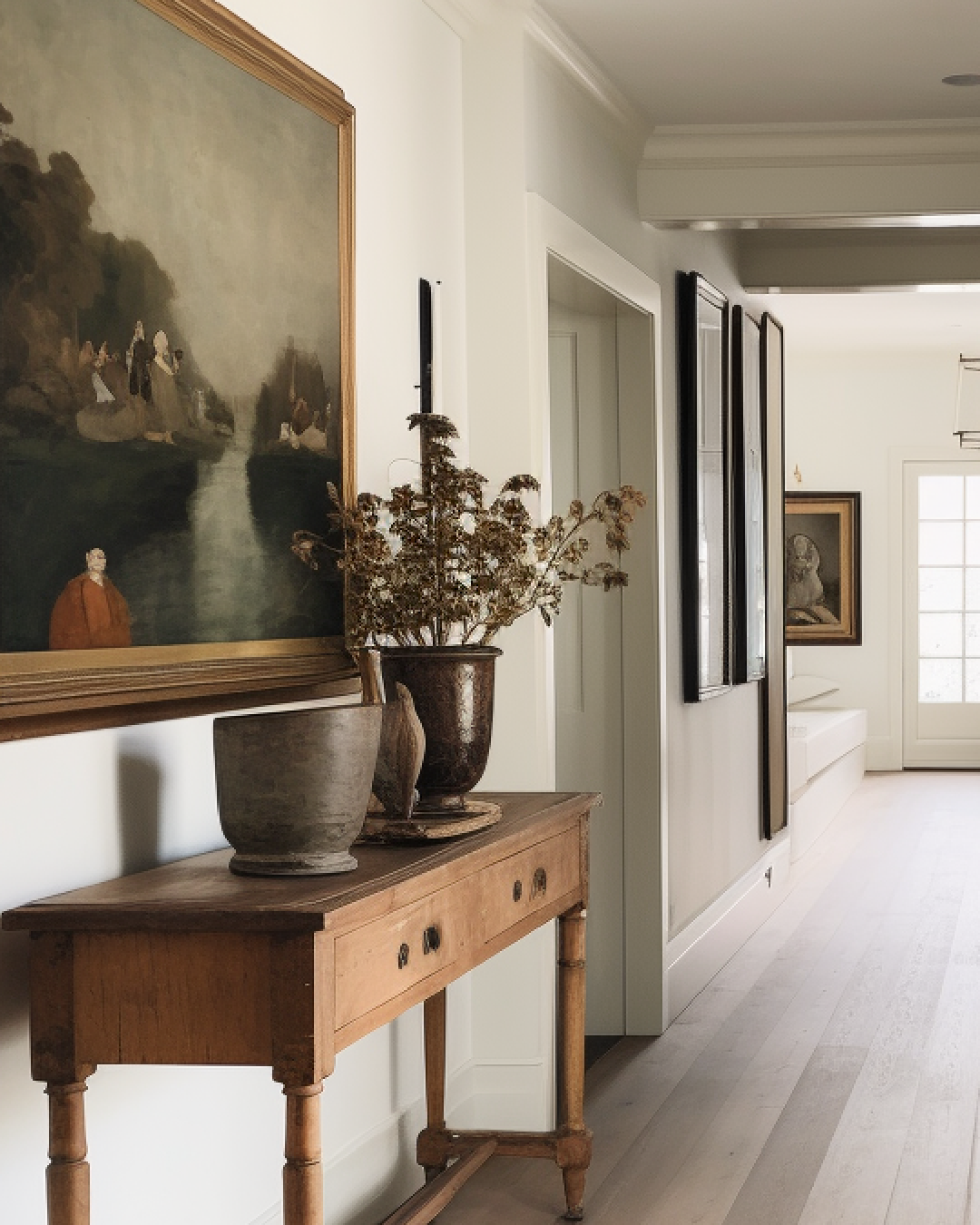design advice
The Secret to a Timeless White Paint Color

If you've ever painted anything white you were likely quick to discover it's not one-shade-fits-all. Choosing the perfect shade of white paint is a nuanced—and at times, trying—process.
While we can't give you a definitive answer on which white looks well in your space without seeing it first, we can explain some tricks of the trade and give you a list of our favorite, timeless white paints colors to experiment with.
First, LRV and White Paint
LRV, or Light Reflectance Value, is a measure of how much light a paint color reflects, expressed as a percentage. It's an essential factor to consider when choosing paint colors, especially whites. A higher LRV means the color will reflect more light, making a room appear larger and brighter, while lower LRVs absorb more light, creating a more intimate, cozy feel.
For white paints, an LRV above 80 is considered relatively high, resulting in a vibrant, bright white. However, white paint with a lower LRV can provide a subdued, more nuanced aesthetic. Remember, LRV can be affected by the paint's finish — gloss, semi-gloss, satin, or matte — and the room's lighting conditions, so consider these factors when choosing your whites.
Second, Undertones and Sun Exposure
When selecting paint colors, especially whites, understanding undertones is crucial. An undertone is a subtle hue that emerges from beneath the primary color when illuminated in certain lighting or when juxtaposed against other colors. Undertones can dramatically change the vibe of a room.
For rooms with abundant natural sunlight, cool or neutral undertones are an excellent choice. These tones, often blue or gray, balance the warmth of the sun, preserving the cool, fresh feel of the room. Light tends to accentuate warm colors, so a cool white paint will prevent the room from appearing overly bright or warm during sunny hours.
On the other hand, rooms with less natural light or facing north can benefit from a warm undertone, like yellow, beige, or even a soft peach. These undertones counteract the cooler, more sterile light in such rooms, creating a more inviting, cozy atmosphere.
To determine the undertones of a paint color, compare it with pure white under different lighting conditions. The hues that pop out are your undertones. Alternatively, the undertone is often listed on the paint chip or can be explained by a paint store employee. Remember, the goal is to choose an undertone that complements your room's natural lighting to create the desired effect.
Now on to our paint recommendations. (Hint: we starred our in-house favorites)
Cool White Paint Colors
Extra White by Sherwin-Williams
Perfect for modern, minimalist spaces, this cool white shade with an LRV of 86 has a slight blue undertone, giving a fresh and crisp look.
Chantilly Lace by Benjamin Moore*
Ideal for smaller rooms to provide a sense of openness, Chantilly Lace's LRV of 92.2 and a subtle gray undertone offer a sleek and sophisticated feel.
Wevet by Farrow & Ball
With an LRV of 74, this Wevet has a gray undertone, giving it a contemporary edge, perfect for industrial-style décor.
High Reflective White by Sherwin-Williams
With an LRV of 93, its High Reflective White's blue undertone gives a cooling effect, great for rooms with ample sunlight.
Decorator's White by Benjamin Moore*
Carrying an LRV of 84, this cool white with a gray undertone offers a neutral backdrop, ideal for highlighting artwork or furniture.
Blackened by Farrow & Ball
With an LRV of 86, Blackened carries a hint of gray, making it perfect for a monochrome, minimalist aesthetic.
Neutral White Paint Colors
Pure White by Sherwin-Williams*
With an LRV of 84, this neutral white has a balance of warm and cool undertones, making Pure White a versatile choice for many settings and light conditions.
White Dove by Benjamin Moore*
White Dove has an LRV of 85. This neutral white with a hint of warm undertone works perfectly for open, airy spaces and brings a soothing feel.
Strong White by Farrow & Ball
With an LRV of 77, the cool grayish undertones of this neutral white lend a contemporary and polished look, ideal for trim and ceilings.
Snowbound by Sherwin-Williams
This neutral white has an LRV of 83 and a slight hint of gray undertone, making it ideal for spaces with a minimalist aesthetic.
Super White by Benjamin Moore
With an LRV of 89.09, its crisp, clean quality makes it a great pick for trim, doors, and ceilings.
Shaded White by Farrow & Ball
Carrying an LRV of 73, this neutral white with a beige undertone offers a softer, warmer feel, perfect for traditional or country-style interiors.
Warm White Paint Colors
Alabaster by Sherwin Williams*
Alabaster has an LRV of 82 and a beige undertone bringing a cozy and welcoming feel, ideal for living rooms and bedrooms.
Swiss Coffee by Benjamin Moore*
With an LRV of 83.93, Swiss Coffee has a beige undertone that evokes a sense of warmth and coziness. Being a warm white paint, it is versatile, ideal for creating a welcoming ambiance in living rooms, bedrooms, or even kitchens.
White Tie by Farrow & Ball
Carrying an LRV of 82, White Tie has a yellow undertone that provides a classic and timeless appeal, great for traditional interiors.
White Flour by Sherwin-Williams
White Flour, with an LRV of 87, is a warm white shade that carries a subtle beige undertone. This paint color adds an inviting and relaxing ambiance to any space, making it an excellent choice for bedrooms, living areas, or any space seeking a serene and comfortable atmosphere.
Simply White by Benjamin Moore
With an LRV of 91.7, this warm white with a slight yellow undertone is versatile and can brighten up spaces with a minimalistic aesthetic.
Pointing by Farrow & Ball
Carrying an LRV of 87, Pointing's red undertone gives a warming feel, making it ideal for cozy living areas and traditional kitchens.
How to Test Paint Samples
Let the experiments begin! Here's a quick guide on how we do it:
- Purchase Sample Pots or Samplize: Most paint brands offer sample pots of their colors. These are typically small, inexpensive pots of paint that you can use for testing purposes. Alternatively, you can also order peel-and-stick paint samples from companies like Samplize.
- Prepare the Surface: Paint a section of your wall that's about 2 feet by 2 feet. Make sure the area is clean and, if necessary, primed before you start painting.
- Paint Two Coats: Paint two coats of the sample color on your wall, allowing each coat to dry thoroughly before applying the next. This will give you the best indication of what the color will look like.
- Observe at Different Times of Day: Look at your paint samples at different times of day, under different lighting conditions. Note how the colors change in natural light, artificial light, and shadow.
- Live with the Color for a Few Days: Before making a decision, live with the paint samples for a few days. You might find that a color you loved at first glance isn't as appealing after a couple of days, or vice versa.
Remember, the color you see on a paint chip or a digital screen may not translate exactly to your walls, so testing samples is an important step to ensure you'll be happy with your final choice.
Need more advice? Discover Mayker's complimentary design service.




